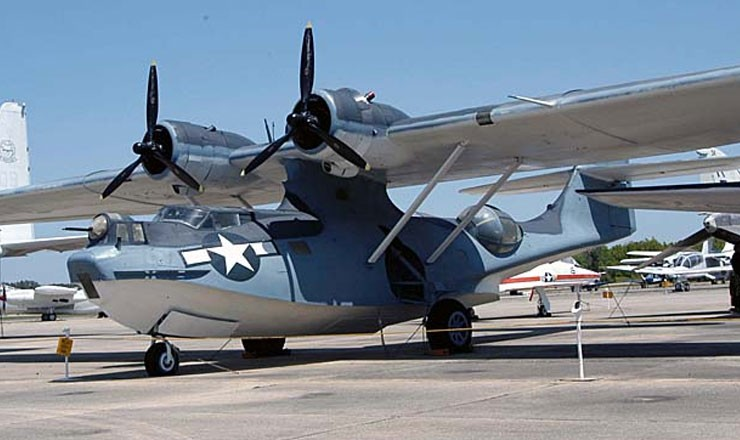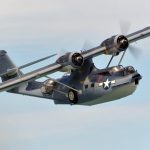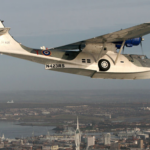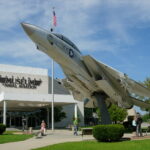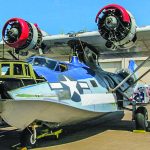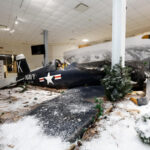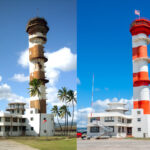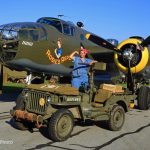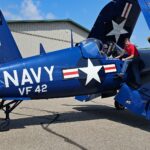by Adam Estes
In July of 2023, the Pearl Harbor Aviation Museum in Hawaii announced that they had reached an agreement with the National Naval Aviation Museum in Pensacola, Florida to ship PBY-5A Catalina Bureau Number 46602 to honor the memory of Catalina crewmen who flew out of Pearl Harbor during the Second World War.
PBY-5A Bureau Number 46602 was accepted by the US Navy on October 14, 1944, and assigned two days later to Coast Guard Air Station (CGAS) Elizabeth City, North Carolina. It served later in Headquarters Squadron 2 (HEDRON-2) of Fleet Air Wing 5 and in Patrol Bombing Squadron 45 (VP-45). During its time in VPB-45, 46602, which was assigned the squadron code 45-P-3, was deployed to Belem, Brazil in order to conduct anti-submarine patrols over the Atlantic Ocean, as per an agreement between the American and Brazilian governments for Brazil to grant the US Navy access to Brazilian ports and airfields to protect against German U-boats targeting Allied merchant vessels in the South Atlantic. By the time World War II had ended, 46602 was assigned to HEDRON-1 of Fleet Air Wing 14. Peacetime would see Bureau Number 46602 join Fleet Aviation Electronics Training Unit (FAETU) Pacific shortly in 1946 after having been briefly transferred to the Naval Aircraft Factory in Philadelphia, Pennsylvania. 46602 rounded out the year 1946 by joining the newly-established Amphibious Patrol Squadron 5 (VP-AM 5) in November, and would remain with VP-AM-5 through its deployments to Naval Air Station (NAS) Whidbey Island, Washington, an Adak, Alaska until VP-AM-5 was disbanded in December 1947. The latter half of its career in the US Navy would see Bureau Number 46602 being carried in a number of aircraft pools in the Pacific Northwest and flying with the Naval Air Reserve in Seattle before being sent to NAS Litchfield Park, Arizona, which was then the primary storage facility for excess US Navy, Marine and Coast Guard aircraft, where it remained until stricken from the inventory in 1956.
Following its military career, 46602 would become one of the many Catalinas converted into tankers to fight wildfires. In the case of 46602, it would largely fight fire in British Columbia, Canada as tanker #3, flying as CF-FFZ for The Flying Fireman Ltd. Though CF-FFZ would sport a larger rudder and vertical stabilizer typical of many firefighting Catalina, it was unique in that the nose turret was not fared over with a “Clipper nose” nor was it re-equipped with Wright Cyclone engines as was common on many of the other Catalinas, which tended to be ex-RCAF Cansos. After a long career of firefighting and a number of civilian owners in both the US and Canada, including being owned briefly by Wilson “Connie” Edwards, the aircraft arrived at the National Naval Aviation Museum in Pensacola, Florida in 1987, where it was kept on outdoor display on the flight line just outside the museum, where has remained until now.
Though the museum has indeed confirmed that the Catalina will be arriving, they will need further assistance in raising funds to begin restoration work on the Catalina once it arrives on Ford Island. More information for those interested in making contributions towards the restoration can find further information here: PBY Restoration – Pearl Harbor Aviation Museum
The move of BuNo 46602 will not leave Pensacola without an example of the most iconic US flying boat of WWII, however. In addition to a cutaway exhibit featuring a Catalina hull, the National Naval Aviation Museum is also home to the last intact example of a non-amphibious Catalina, PBY-5 BuNo 08317, which served at Naval Air Station Pensacola during WWII as a training aircraft. Stricken from the Navy inventory, it was kept in storage by the Navy in Norfolk, Virginia until it was donated to the National Air and Space Museum in 1965. It has been on loan to Pensacola from the National Air and Space Museum since 1973.







